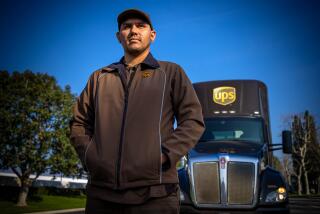Hard times for business in the San Fernando Valley
Once saluted as America’s suburb, the San Fernando Valley has fallen on difficult times.
Nestle USA announced last month that it would close the Chatsworth plant where Hot Pockets frozen sandwiches have been made since 1988, eliminating 360 jobs as it moves production to Kentucky.
Not far behind, Sunkist Growers is moving out after four decades in the Valley, leaving its Sherman Oaks headquarters and heading to Santa Clarita.
And adult film production — much of which is based in the Valley — has plummeted, as has mainstream film and television production.
And so, at the first-of-its-kind State of the Valley luncheon Thursday, the message from Los Angeles City Council members representing the area was both clear and blunt: Valley business just isn’t what it used to be.
“When I was growing up ... we were the ideal suburban lifestyle,” said Councilman Paul Krekorian.
“We invested in our future, we built our infrastructure ... and we know that in the years since then some of those things have kind of gone by the wayside and the Valley has hit on harder times.”
The seven council members representing the Valley gathered to tackle those challenges, addressing a wide range of topics as part of a panel discussion hosted by the Greater San Fernando Valley Chamber of Commerce at the Beverly Garland Hotel in North Hollywood.
Valley businesses, said Nancy Hoffman Vanyek, chief executive officer of the chamber, are worried about Mayor Eric Garcetti’s plan to raise the minimum wage to $13.25 an hour and about employers and manufacturing jobs fleeing the area.
“It’s hard in the Valley,” Hoffman Vanyek said. “I think no matter what your party is, you should be concerned about jobs.”
Councilwoman Nury Martinez, who represents much of the eastern and central Valley, said that her district is plagued with vacant shopping centers and that city bureaucracy has made doing business difficult.
“I grew up at a time when we used to build things in the Valley,” she said. “My mother used to work at Price Pfister, where we used to make faucets. My friends’ parents worked at General Motors, where they used to build cars.
“That’s all gone,” Martinez said.
Councilmen Tom LaBonge and Paul Koretz said the luring of film and TV production to other areas has affected the Valley greatly. Both praised a bill signed by Gov. Jerry Brown on Thursday that triples funding for California’s film and TV tax credit to $330 million annually.
“Part of why our recovery in L.A. and our recovery statewide has been a little slower has been runaway production,” Koretz said. “This should be a good first step, but what we need to do is be aggressive and not pass a $300-million tax credit but a billion-dollar-a-year tax credit.
“We will get back every dollar of that,” he said.
Different parts of the Valley have been harder hit than others in recent years, a testament to the sprawling size of the region, which unsuccessfully tried to secede from Los Angeles 12 years ago.
Councilman Bob Blumenfield, who represents much of the west Valley, said he’s optimistic about his district’s economic future and heralded the recently approved Warner Center 2035 plan, which calls for dense residential and commercial development near Woodland Hills.
The plan, he said, will create more than 40,000 new jobs and 30 million square feet of commercial space. He also said it dramatically streamlines the process for approving new projects.
The Greater San Fernando Valley Chamber of Commerce said it hoped to host a State of the Valley event annually to discuss regional issues.
“With 1.8 million people, we could be a city ourselves,” Hoffman Vanyek said. “We had nothing that was just about the Valley.”
Twitter: @haileybranson
More to Read
Start your day right
Sign up for Essential California for news, features and recommendations from the L.A. Times and beyond in your inbox six days a week.
You may occasionally receive promotional content from the Los Angeles Times.







